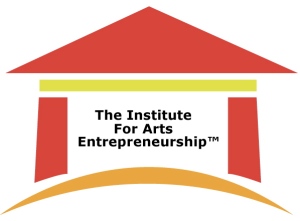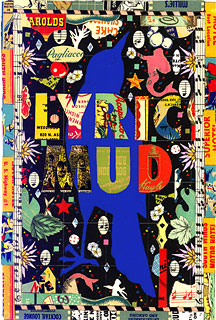Fall is indeed here, and I am returning from my blog-break to once again rabble-rouse for innovation to reign and your creativity to blossom throughout this new season and beyond.
I’ll remember this summer as one where I worked less on business but more on my mind — specifically, on trying to detach from the addictions of mind. Creativity is the nimble dance between mind and heart, but so many of us get caught in a stranglehold of mind so that we are blocked from expressing ourselves, taking risks, seeing differently and feeling free to create (not to mention just feeling good). The mind is a powerful instrument, but, as Eckhart Tolle in his classic The Power of Now explains, “about 80 to 90 percent of most people’s thinking is not only repetitive and useless, but because of its dysfunctional and often negative nature, much of it is harmful.” Too much of our thinking — especially in this Information Overload-Great Recession-Multi-Tasking world of ours — is spent stuck on shoulds, fears, anxiety about the future and replays of the past.

I know mine was. So I consciously broke from my normal routine, both physically and mentally, and shifted my mindset. I was lucky to spend more time than I ever have on Lake Michigan, thanks to my friend Joe and his sailboat (above). I truly was able to incubate — a key part of the creative process — in water and for more prolonged periods than I have before. I was able to leave my scolding mind with the buildings of the city and embrace the great creative principle of “Not Knowing” — seeing with fresh eyes, giving up being right and smart and an expert. My mind stopped being king, and frankly I feel much better and more ready to imagine and create a future that works for me.
The mind is essentially a survival machine. Attack and defense against other minds, gathering, storing, and analyzing information–that is what it is good at, but it is not at all creative. All true artists, whether they know it or not, create from a place of no-mind, from inner stillness. The mind then gives form to the creative impulse or insight. Even the great scientists have reported that their creative breakthroughs came at a time of mental quietude.
~from The Power of Now, p. 19-20
I know I was extremely lucky to be able to take a partial break this summer, and that it’s hard to find the time for “mental quietude.” But you can find a way to reduce your “predominance of mind,” as Tolle would call it, both for your own sanity and to be more creative. Read The Power of Now. Learn to Meditate. Swim, run, practice Tai Chi, paint or lose yourself in a creative pursuit that gets you out of your thoughts. The key is to be aware of — and to be less enslaved by — your involuntary internal dialogue, especially the nasty, needless thoughts that create stress but little else of value.
Want more from Adam? Check out his Innovation on my Mind blog.
 Multiple Intelligence theory, widely accepted in the world of education, came out of the work of Harvard researcher
Multiple Intelligence theory, widely accepted in the world of education, came out of the work of Harvard researcher  This exhibit was the installation work of Jan Tichy, now on display for the
This exhibit was the installation work of Jan Tichy, now on display for the  What makes art so difficult to evaluate is that the convergence is much more dependent on your reaction. We are unlikely to agree that Tichy’s light installations “solves a problem” or “works,” as we may be able to for products or other solutions. The convergence piece for artistic creativity has to do with meaning: Does it evoke something meaningful for you? It could just be a feeling, a sense of pleasure, or an intuitive resonance. If you can derive some kind of meaning, then the art is indeed creative for you. The people next to you might not see or feel anything meaningful and therefore the same installation cannot be deemed creative. For them.
What makes art so difficult to evaluate is that the convergence is much more dependent on your reaction. We are unlikely to agree that Tichy’s light installations “solves a problem” or “works,” as we may be able to for products or other solutions. The convergence piece for artistic creativity has to do with meaning: Does it evoke something meaningful for you? It could just be a feeling, a sense of pleasure, or an intuitive resonance. If you can derive some kind of meaning, then the art is indeed creative for you. The people next to you might not see or feel anything meaningful and therefore the same installation cannot be deemed creative. For them. hired by them and then even more surprised to learn of their ongoing focus for leaders: To stimulate their right, creative brains to keep them thinking differently and staying ahead of the curve. Here’s an artist’s rendering of me in action (right) during an evening program on collaboration and innovation.
hired by them and then even more surprised to learn of their ongoing focus for leaders: To stimulate their right, creative brains to keep them thinking differently and staying ahead of the curve. Here’s an artist’s rendering of me in action (right) during an evening program on collaboration and innovation.
 Finally is our own motivation. Being intrinsically motivated–driven by deep interest and involvement in the task/activity, by curiosity, enjoyment, self-expression or personal sense of challenge (rather than being extrinsically motivated by money or another person or a deadline)–is perhaps the most important determinant in finding our sweet spot. Research has shown, Amabile confirmed recently to me, that motivation at work that is primarily intrinsic results in higher productivity and increased creativity compared to a motivation that is primarily extrinsic.
Finally is our own motivation. Being intrinsically motivated–driven by deep interest and involvement in the task/activity, by curiosity, enjoyment, self-expression or personal sense of challenge (rather than being extrinsically motivated by money or another person or a deadline)–is perhaps the most important determinant in finding our sweet spot. Research has shown, Amabile confirmed recently to me, that motivation at work that is primarily intrinsic results in higher productivity and increased creativity compared to a motivation that is primarily extrinsic.
 Now, while it’s been a cool summer in Chicago, many people would be surprised to learn that some of the creative heat of Burning Man can indeed be found in Chicago each month at the
Now, while it’s been a cool summer in Chicago, many people would be surprised to learn that some of the creative heat of Burning Man can indeed be found in Chicago each month at the 
 This is
This is  Like the
Like the 
 I’m in front of a computer right now, as you probably are. Technology has enabled us to get more of our social and educational needs met this way, on our own time, without having to dress up for the occasion. There are so many resources online to engage, entertain and teach us, with more video than ever before. So if we’re going to take on the hassle, travel and expense to learn live and to be with others while doing so, we need to demand that our “speakers” learn how to involve us more, tap into the knowledge in the room, bring alive the bodies and hearts and imagination that finds themselves together at that one moment of possibility.
I’m in front of a computer right now, as you probably are. Technology has enabled us to get more of our social and educational needs met this way, on our own time, without having to dress up for the occasion. There are so many resources online to engage, entertain and teach us, with more video than ever before. So if we’re going to take on the hassle, travel and expense to learn live and to be with others while doing so, we need to demand that our “speakers” learn how to involve us more, tap into the knowledge in the room, bring alive the bodies and hearts and imagination that finds themselves together at that one moment of possibility. Historically, the creative process was seen in some ways as mysterious, and included “incubation,” or time away from a problem, before “illumination” or an “Aha moment” hit you (perhaps in the shower). CPS, sometimes called “deliberate creativity,” has taken a little mystery out by identifying and separating practical steps, captured in the graphic above, that are universal and that lead to the most creative solutions. We all need to learn CPS.
Historically, the creative process was seen in some ways as mysterious, and included “incubation,” or time away from a problem, before “illumination” or an “Aha moment” hit you (perhaps in the shower). CPS, sometimes called “deliberate creativity,” has taken a little mystery out by identifying and separating practical steps, captured in the graphic above, that are universal and that lead to the most creative solutions. We all need to learn CPS.  Nevertheless, Bucky somehow was able to translate his visionary ideas in ways that spoke to wide audiences and people with means and influence. Even though few of his prototypes led to commercialization or popular use today (though watch out for a future revival) he, like his more practical inventor/comprehensivist forebear Edison, was able to garner financial and commercial support from investors and companies, including Ford for his Dymaxion car, that in part empowered him to be so prolific and well known.
Nevertheless, Bucky somehow was able to translate his visionary ideas in ways that spoke to wide audiences and people with means and influence. Even though few of his prototypes led to commercialization or popular use today (though watch out for a future revival) he, like his more practical inventor/comprehensivist forebear Edison, was able to garner financial and commercial support from investors and companies, including Ford for his Dymaxion car, that in part empowered him to be so prolific and well known. 








